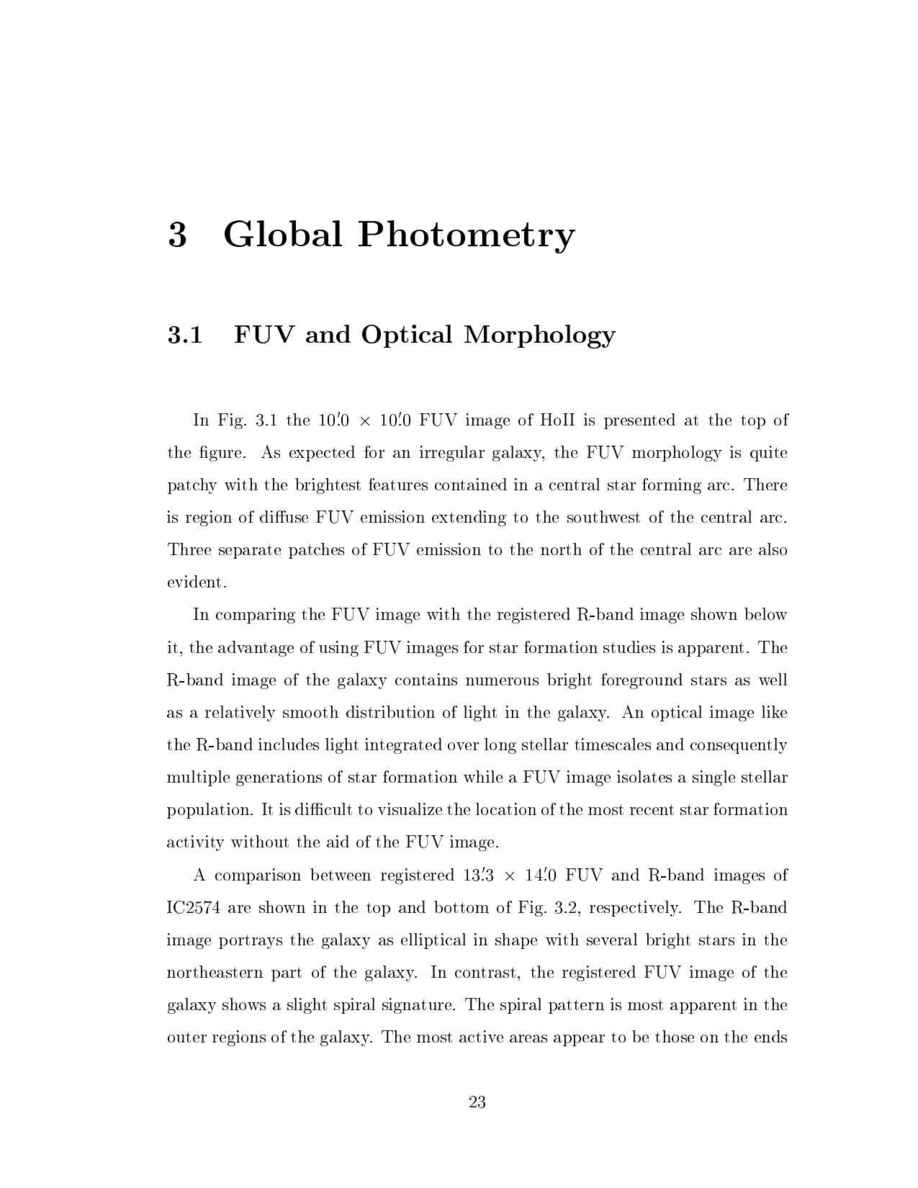Astronomical Applications Department, U.S. Naval Observatory thesis Page 37

3 Global Photometry
3.1
FUV
and
Optical
Morphology
In Fig. 3.1 the 10
:
0
0
10
:
0
0 FUV image of HoII is presented at the top of
the gure. As expected for an irregular galaxy, the FUV morphology is quite
patchy with the brightest features contained in a central star forming arc. There
is region of di use FUV emission extending to the southwest of the central arc.
Three separate patches of FUV emission to the north of the central arc are also
evident.
In comparing the FUV image with the registered R-band image shown below
it, the advantage of using FUV images for star formation studies is apparent. The
R-band image of the galaxy contains numerous bright foreground stars as well
as a relatively smooth distribution of light in the galaxy. An optical image like
the R-band includes light integrated over long stellar timescales and consequently
multiple generations of star formation while a FUV image isolates a single stellar
population. It is di cult to visualize the location of the most recent star formation
activity without the aid of the FUV image.
A comparison between registered 13
:
0
3
14
:
0
0 FUV and R-band images of
IC2574 are shown in the top and bottom of Fig. 3.2, respectively. The R-band
image portrays the galaxy as elliptical in shape with several bright stars in the
northeastern part of the galaxy. In contrast, the registered FUV image of the
galaxy shows a slight spiral signature. The spiral pattern is most apparent in the
outer regions of the galaxy. The most active areas appear to be those on the ends
23
